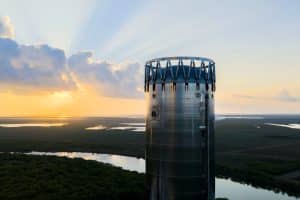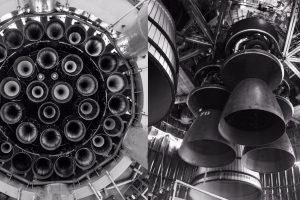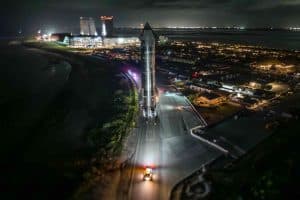SpaceX CEO Elon Musk has presented the first significant update on the company’s Starship program since September 2019, offering a couple of new details about the status of the first orbital launch attempt of the largest and most powerful rocket ever built.
Unfortunately, above all else, the promised update was primarily a rehash of the broad-strokes vision of SpaceX’s Starship and Mars programs, as well as some basic details – most already known – about the rocket, its Raptor engines, and how it will be operated. Nonetheless, a large portion of the event was dedicated to audience questions, some of which actually extracted some specific details from the SpaceX CEO. Perhaps the single most important news: a rough but updated schedule for Starship’s first orbital test flight.
To be clear, a great many questions remain unanswered. Months after Starbase’s first orbital tank farm reached some degree of completion, SpaceX has yet to fill four main liquid methane (LCH4) tanks with even an ounce of fuel. Over the same period, the farm’s five liquid oxygen and nitrogen (LOx/LN2) tanks have been filled with thousands of tons of propellant and coolant. Why is still entirely unclear, save for speculation that SpaceX ran afoul of rudimentary methane storage regulations and is ever so slowly rectifying those errors with modifications. Without so much as a partially operational tank farm, SpaceX will be unable to attempt an orbital Starship launch, let alone start the process of qualifying a Super Heavy booster for flight with wet dress rehearsals (WDRs) and static fire tests.
Musk also failed to confirm or offer an educated guess as to which Starship and Super Heavy booster will support the first orbital test flight (OTF), whether the first OTF will truly reach orbit (rather than ‘just’ orbital velocity), and what will happen to Ship 20 and Booster 4 if – as a great deal of speculation suggests – they’ve fallen out of favor. If they’re to be replaced, it’s also unclear why that is or how long it might take to qualify a new ship and booster given that Super Heavy B4, for example, has yet to attempt a single static fire test a full six months after it first reached its full height.
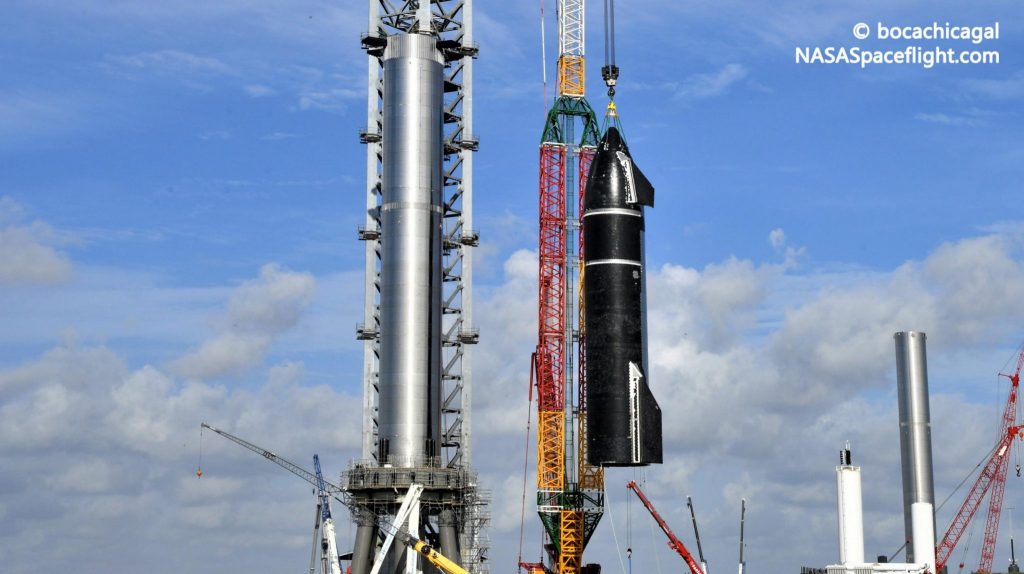
Nonetheless, largely thanks to questions asked by members of the media, Musk did offer some valuable insight into Starship’s first orbital-class test flight. The SpaceX CEO says that he believes the Federal Aviation Administration (FAA) could complete an environmental assessment of Starbase as early as March. In the same presentation, Musk stated that SpaceX would “hopefully [complete environmental reviews] a couple months.” A lack of environmental approval has been the single most important bottleneck of orbital Starbase launch operations for months. The FAA originally anticipated that those reviews would be complete by the end of 2021 but recently delayed the estimated date of completion to the end of February 2022. Another delay from February to March (or later) has been expected for weeks.
It’s unclear how seamless the whole process will be but SpaceX will also need to receive an FAA license for orbital Starship launches after clearing environmental reviews. That could take days, weeks, months, or even a year or more. If SpaceX doesn’t receive a Finding Of No Significant Impact (FONSI) on its Starbase environmental assessment (EA) and instead has to complete a far more extensive Environmental Impact Statement (EIS), Starbase could be stuck in bureaucratic gridlock well into 2023 or even 2024.
Thankfully, Musk is extremely confident in SpaceX’s alternatives. In the event that Starbase becomes indefinitely unusable, SpaceX has already received full environmental approval to launch Starship out of Kennedy Space Center Pad 39A. The company has already begun the process of assembling a Starship launch and catch tower offsite and Musk believes that a Pad 39A Starship launch site could be brought online in just 6-8 months if SpaceX refocuses all of its Starship resources onto Florida.
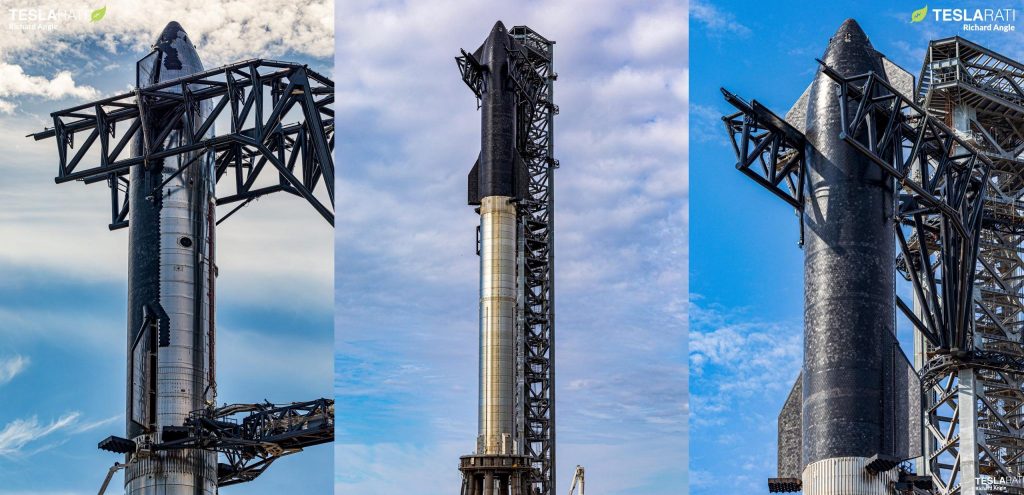
The CEO also says that SpaceX’s goal is to have the hardware needed for Starship’s first orbital test flight ready to launch around the same as regulatory approval is secured – “hopefully a couple months for both,” in Musk’s words. If Starship S20 and Booster 4 are still assigned to mission, that schedule is not difficult to believe. Starship has already completed virtually all of the ground testing needed to qualify it for flight, while – from the outside – Super Heavy has never looked more ready for static fire testing.
If SpaceX intends to use a different ship and booster, though, the company will have to cut the amount of time needed for final assembly and qualification testing by a factor of two or three relative to B4/S20. If the next ship and booster pair takes a similar amount of time as B4/S20, the hardware needed for Starship’s first orbital launch attempt might not be ready until August or September 2022. SpaceX will also need to build, test, qualify, and ship around three-dozen Raptor 2 engines, the production of which could singlehandedly take at least six or seven weeks at the current pace of production.
Ultimately, no matter where the cards currently in the air end up falling, it looks like SpaceX has an extremely busy – and hopefully fruitful – year of Starship development and testing ahead of it.



